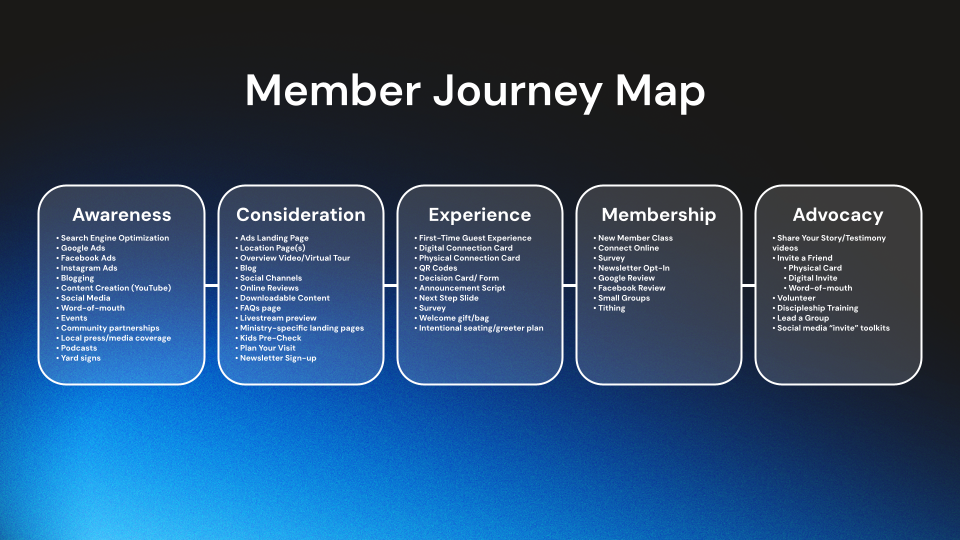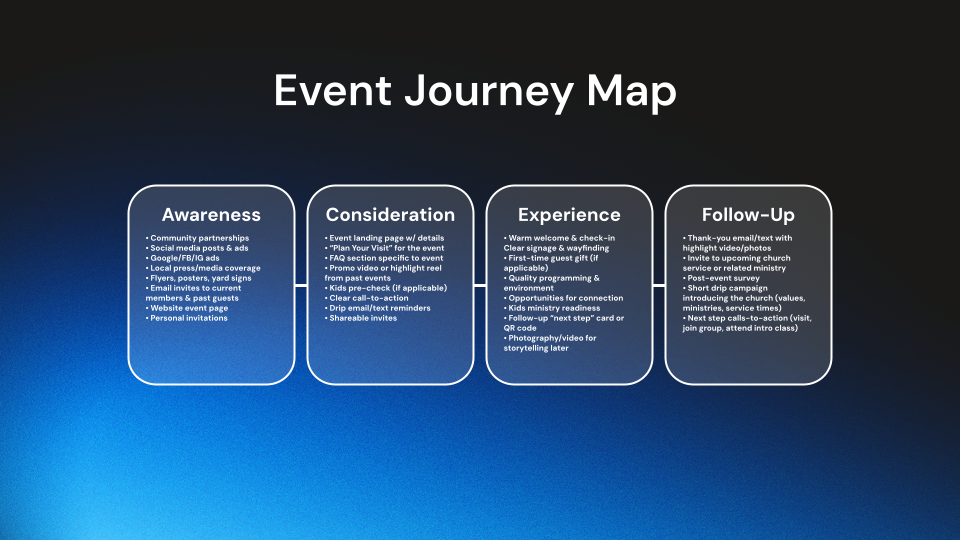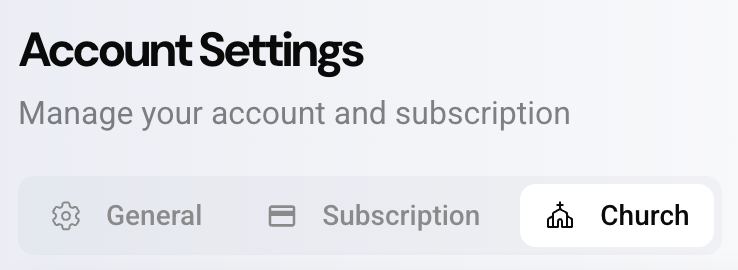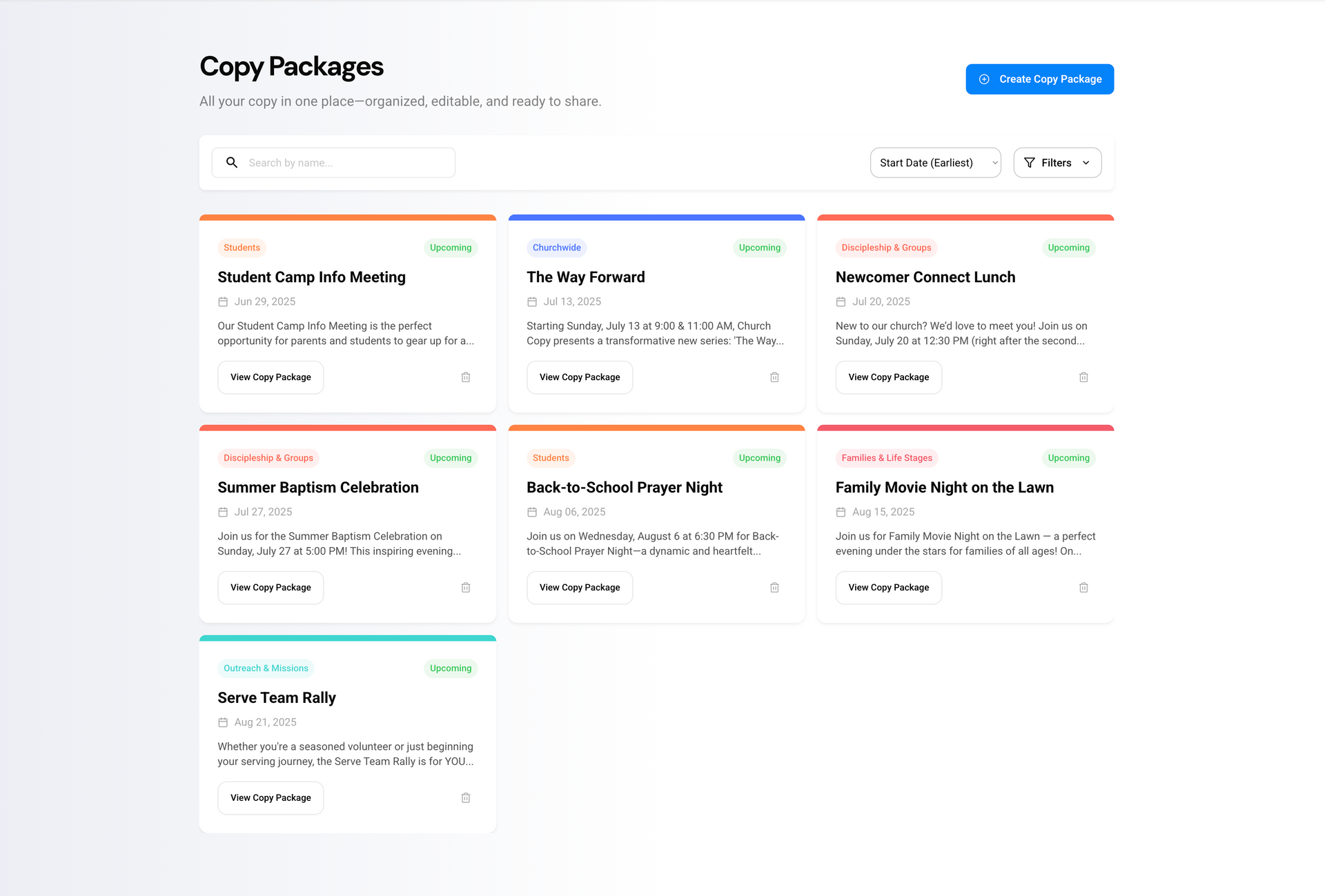Church Communication, Simplified: A Practical Look at AI + Journey Mapping
Church communication is complex. When you’re in charge, you’re not just managing one channel, you’re responsible for every ministry and every message. Kids. Students. Groups. Outreach. Worship nights. Seasonal activities. Sundays. And it never stops.
Emails, texts, social posts, announcement scripts, and sometimes even print pieces. Without a framework, it’s easy to slip into survival mode: recycling old content, rushing last-minute announcements, or hoping a single post will be enough.
But here’s the truth: when communication gets messy or inconsistent, people don’t just miss information. They miss opportunities to connect. And when they miss opportunities, they miss steps toward becoming a healthy, engaged part of your church.
That’s where journey mapping comes in.
The Member Journey Map
In the tech world, where I spent most of my career, companies obsess over mapping their customer journeys. Every touchpoint is documented. When I saw that for the first time in 2018, it was a wake-up call: most churches don’t map the member journey with that same intentionality.
Here’s a practical framework to start with:
- Awareness – How people first hear about your church (Google, social media, word of mouth).
- Consideration – When they’re deciding whether to visit (website, FAQs, livestream previews, reviews).
- Experience – Everything from looking up service times to parking, signage, welcome, kids’ check-in, and follow-up.
- Membership – Belonging through classes, groups, serving, giving, or ongoing engagement.
- Advocacy – Members inviting others, sharing testimonies, and becoming champions of your church.

The key insight: not every stage needs the same type of communication. Awareness and consideration lean heavily on content. Experience is mostly relational and pastoral. Membership and advocacy are built on ongoing care and community.
Mapping helps you see which areas require the most communication lift, and where AI can help.
The Event Journey Map
Most churches are event-driven, and events have their own journey:
- Awareness – Letting people know it exists.
- Consideration – Helping them decide if it’s for them.
- Experience – What happens when they show up.
- Follow-Up – Thanking them and pointing to what’s next.

A mapped event might look like this:
- Two weeks out - Save the date
- One week out - Here’s why it matters
- Day of -It’s happening tonight
- After - Thanks for coming & here’s what’s next
That’s the difference between random announcements and intentional communication.
Where AI Fits
AI won’t run the experience for you, but it can simplify the heavy lift.
Instead of spending hours writing, you can prompt AI with:
"Act as a church communications director. Using the following context, create a full communications plan for our upcoming Fall Festival on Saturday, October 12 at 5 PM. Generate one email campaign, a sequence of two text messages, and three social media posts mapped to awareness, consideration, and follow-up stages of the event journey. Be sure to write in our church’s voice, following these settings:
- Mission Statement: ‘To help people discover life in Jesus and live it out together.’
- Vision Statement: ‘We are a community where families are welcomed, disciples are made, and our city is impacted with the gospel.’
- Desired Tone: Warm, invitational, family-friendly, clear, and free of insider jargon.
- Target Audience: Families in our city with kids, ages 4–12, who may be new to church or only attend occasionally.
Please ensure the email includes a clear subject line and call-to-action link to RSVP. The texts should fit within standard SMS character limits. The social posts should be platform-specific: one for Facebook, one for Instagram, and one for X (Twitter).”
Done well, AI can generate in seconds what used to take hours. The key is tying your prompts to the journey stages.
ChurchCopy.ai: The Easy Button®
General AI tools are helpful, but they require constant prompting, reminders about your voice, and manual organization.
That’s why we built ChurchCopy.ai. Your mission, vision, and tone are built in. You describe the event once, and the platform generates a full Copy Package™: posts, emails, and texts mapped to awareness, consideration, and follow-up.
Everything is editable, organized, and color-coded by ministry, so you’re not digging through Google Docs or Slack threads.
Here’s a challenge: take one upcoming event and map it out. Awareness. Consideration. Experience. Follow-Up. Then try using AI to generate the content for those stages.
Or, if you want the Easy Button®, the version built specifically for churches, create a free ChurchCopy.ai account and get your first three Copy Packages™ for free.
You’ll see how much time it saves, how much more consistent your messaging feels, and how much lighter communication becomes.
Because church communication doesn’t have to feel overwhelming.
It can be mapped.
It can be simplified.
And the time you save, you can spend it where it matters most: on people.
EASY BUTTON® is a registered trademark of Staples, Inc.
What is journey mapping for churches?
It is a simple way to plan communications across stages like Awareness, Consideration, Experience, Membership, and Advocacy so people do not miss key next steps.
How does journey mapping change event promotion?
You map each event’s stages, Awareness, Consideration, Experience, and Follow Up, then schedule messages like “Save the date,” “Why it matters,” “It’s happening,” and “Thanks and what’s next.”
Where does church AI fit into the journey?
AI can draft the heavy-lift content, emails, texts, posts, aligned to those stages in seconds while your team focuses on people and in-person experience.
What makes ChurchCopy different from general AI tools?
Your mission, vision, and tone are saved once, and the app generates a full Copy Package mapped to the journey so you are not constantly re-prompting or organizing outputs.
What is included in a ChurchCopy Copy Package?
Posts, emails, and text messages organized and color coded by ministry, aligned to Awareness, Consideration, and Follow Up. Everything is editable.
Can ChurchCopy really save time for communications teams?
Yes, when used well it produces in seconds what used to take hours, reducing last minute scrambles and inconsistent messaging.
How do I try ChurchCopy?
Create a free account and generate your first three Copy Packages to see the workflow.
Is ChurchCopy a good church newsletter tool?
Yes, because your event content is already structured by stage and ministry, it is easy to assemble polished updates for email in minutes.
Can I keep our church’s voice and theology consistent?
Yes, define mission, vision, and tone once so every message stays clear, warm, and true to your church across channels.

